Mark Justiniani's ability to intersect social realism with political context shines in 'Void of Spectacles'
"What is a void?" asks Mark Justiani at the media preview for his newest show, Void of Spectacles: Reflections on Passages Through Time and History. The artist has a twinkle in his eyes as he adds, “What do you see?”
Notions of intangible nothingness are quickly dissuaded when Justiniani reveals that he considers the concept of a so-called void to be “thicker than nothing,” while remaining decidedly less excessive than the spectacle implied in the show’s title. It’s a balancing act that’s as (deceptively) straightforward as it is provocative, a characteristic that’s remained consistent across the artist’s famed Infinity Works series.
On display at the Ateneo Art Gallery (AAG) from Feb. 6 to July 6, Justiniani’s Void of Spectacles presents Firewalk, Arkipelago, and Well—critically acclaimed installations originally created for the Gallery Children’s Biennale (National Gallery Singapore, 2017-2021), Kinderbiënnale, Japanisches Palais, Staatliche Kunstsammlungen (Dresden, Germany, 2018-2020), and the Philippine Pavilion at the 58th International Art Exhibition La Biennale di Venezia (Italy, 2019). Shipped to Manila and painstakingly rebuilt to the artist’s exacting specifications, Void of Spectacles marks the first time the three works are being exhibited in the Philippines.
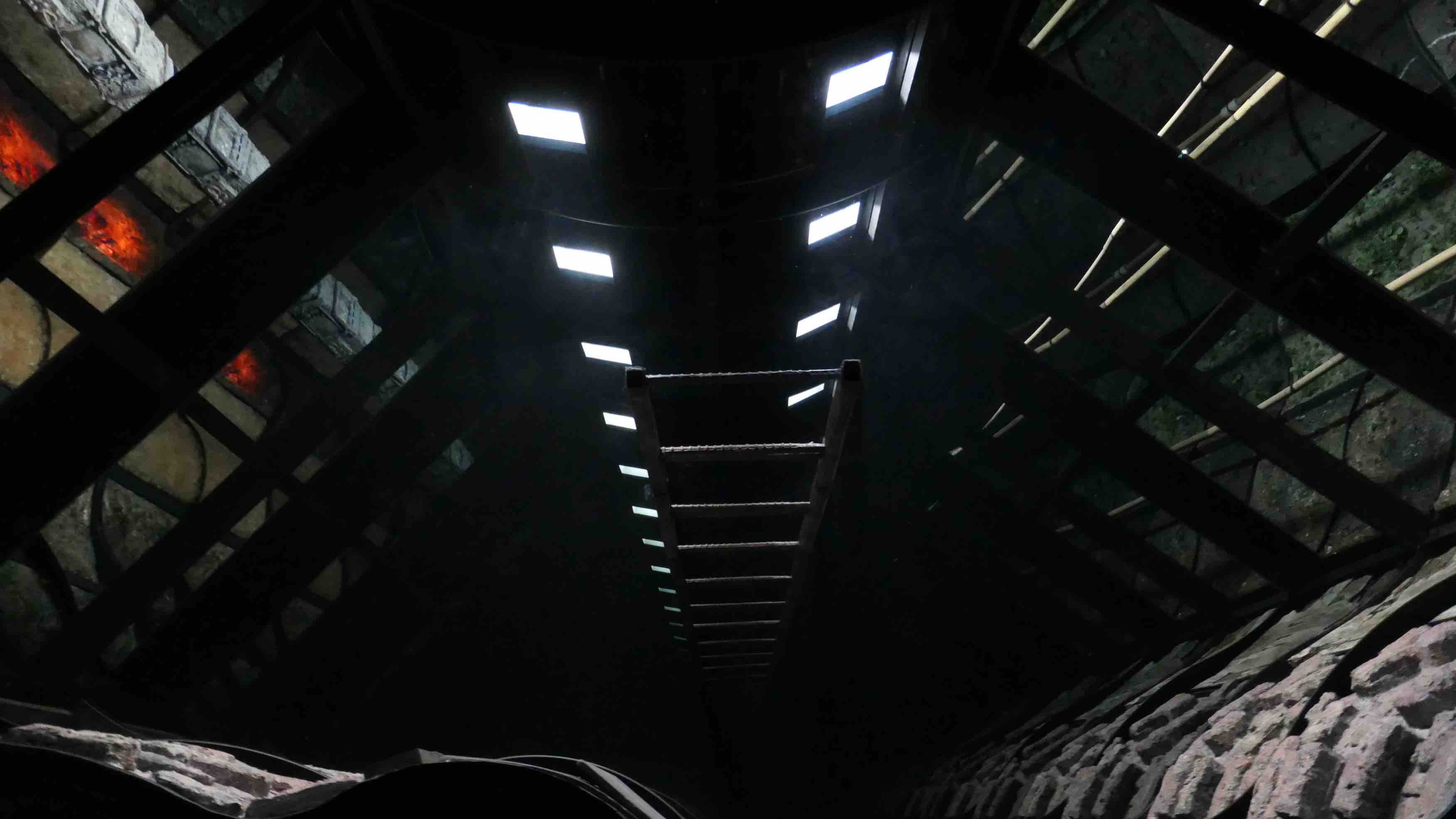
Speaking with PhilSTAR L!fe, Justiniani shared that the show, particularly the Arkipelago section, contains the latest iterations of his installations, adjusted based on feedback and comments from the pieces’ prior showings, as, “Some of the changes we made were based on memories that were touched, while other times, additional interpretations were the product of happy accidents. A lot of people added to the work—we just asked for their permission to share what they saw.”
According to AAG Director and Chief Curator Boots Herrera, the process of bringing the show home was one of the most challenging in the gallery’s history. Everything—from the size of the gallery’s loading dock, to the height of the gallery’s ceiling—had to be taken into consideration, to say nothing of the actual time taken to (re-)assemble each installation. Construction at the AAG began last Dec. 18.
All told, the effort was well worth it. Void of Spectacles is remarkable to behold. Located at the AAG’s third floor, guests are invited to stand (non-slip socks or shoe covers are provided) directly on the installations’ multiple tempered glass surfaces. Through the glass, mirrors and other reflective materials are used to create captivating illusions anchored by or built around real-world objects. Lit in specific ways from within the installation, the visuals provide a mind-bending, almost voyeuristic journey through the artist’s thought processes.

As noted by Herrera, the appeal of the show lay in how, “[Justiani’s] social realist roots are still present, but presented in a subtle way. It helps to have a sense of Philippine history and the artist himself.” When asked if the gallery was expecting any sort of political backlash or controversy for its subject matter, she noted, "Sana! A conversation would be nice."
Step by step
Positioned at the show’s entrance is Firewalk, a 53-foot-long installation that serves as a literal bridge to the experience proper. Originally presented in Singapore, the piece is an excellent introduction to Justiniani’s Infinity Works, with the artist’s predilections for visual double entendre and installation art on full display. Using mirrors to virtually extend the space underfoot, Firewalk resembles an archeological dig site, replete with artifact-filled niches set into aged masonry. Toys, papers, and other objects complement piles of books and children’s blocks that descend to dizzying (implied) subterranean depths.
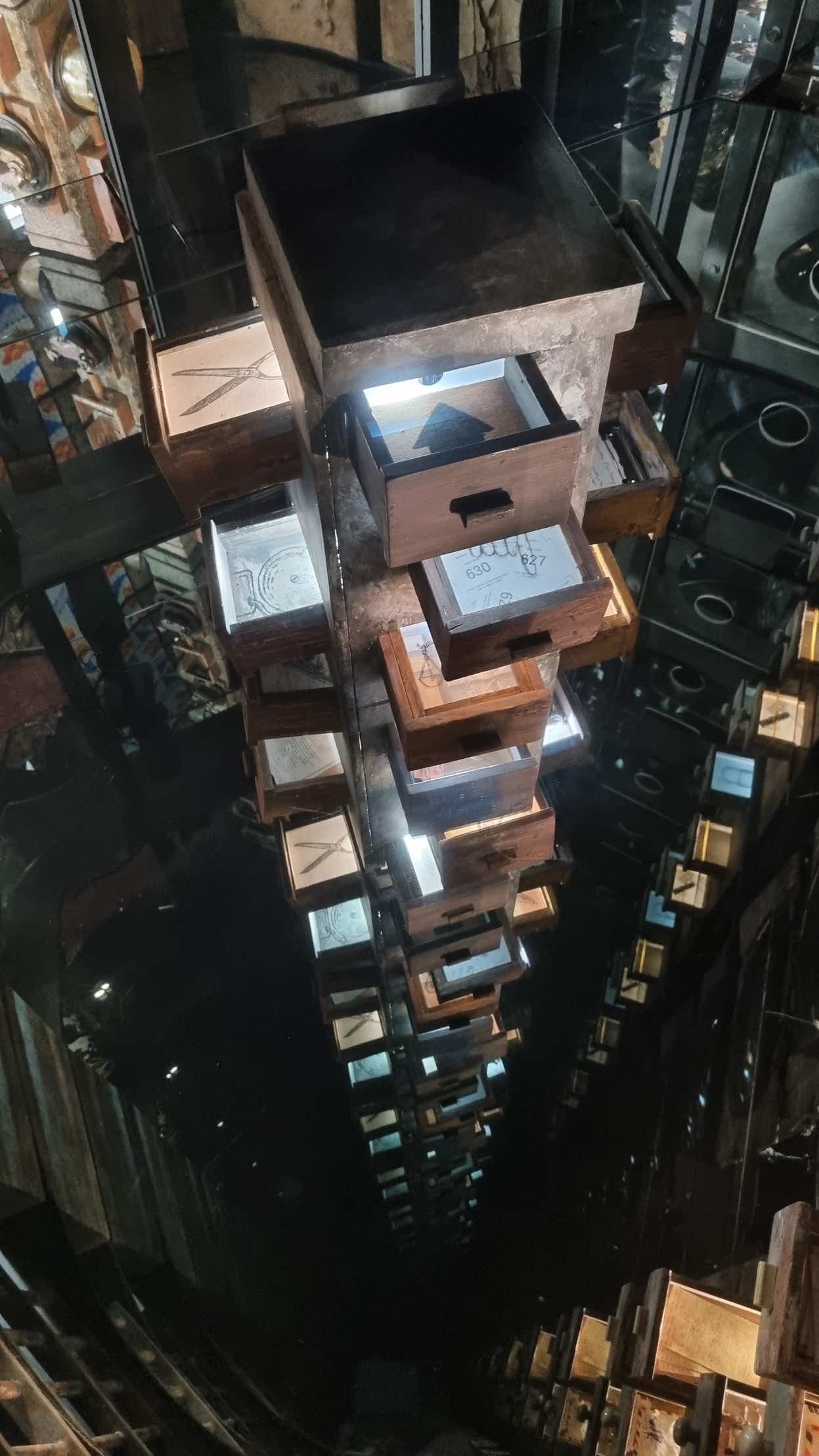
A nation's story
Entering the show’s main section, the first of the Arkipelago trilogy, Province, is revealed. Evoking memories of Philippine provincial life and all of its contradictions, this segment comes across as the most personal for Justiniani, building on images from his Negrense upbringing. As befitting the artist’s social realist roots, the disparity between the haves and have-nots is ever present, with balconies of stately plantation homes and wheels of sugar trains juxtaposed against meager meals and dual message-bearing chalkboards.
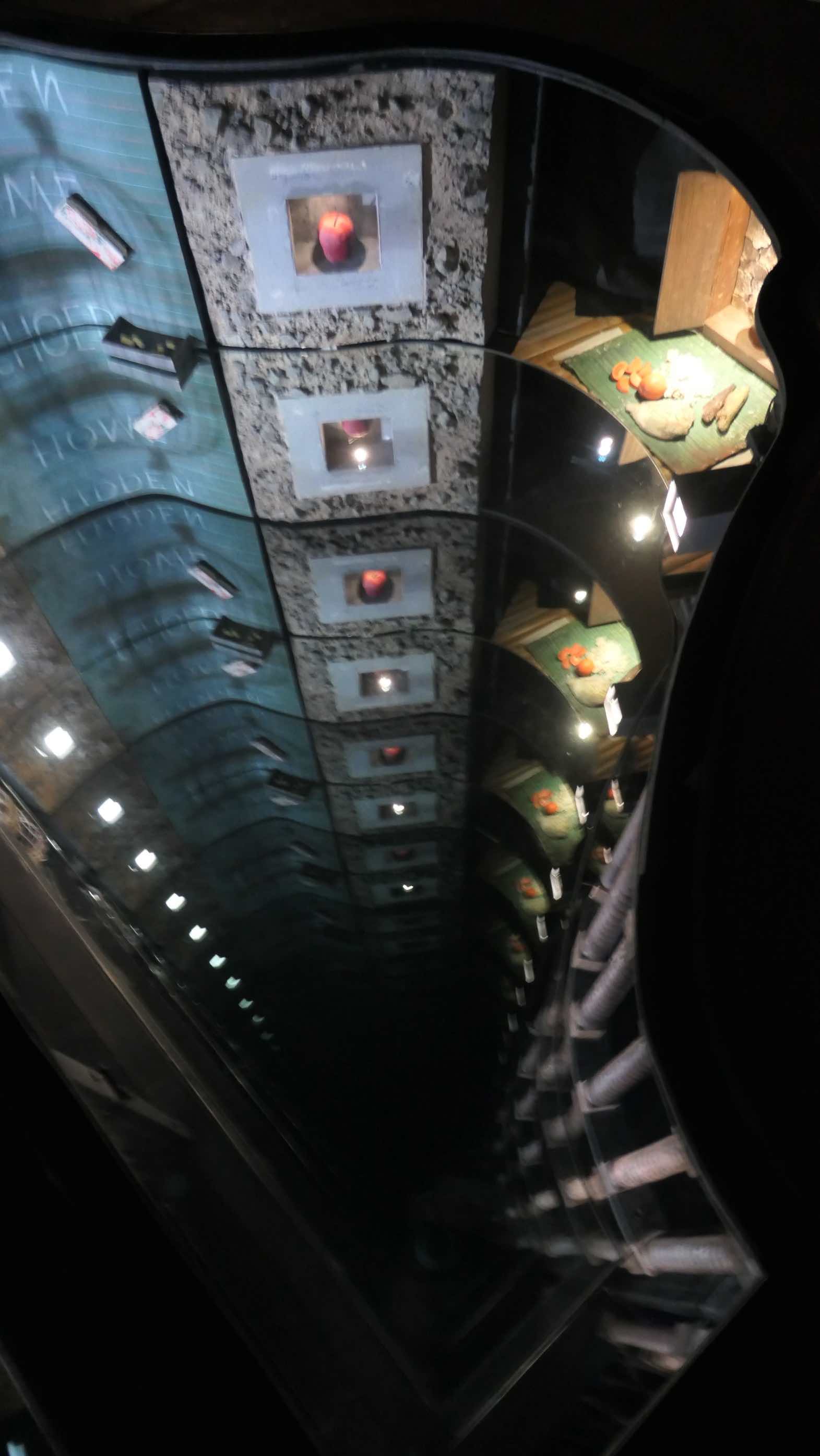
In Capital, nostalgia’s veneer is stripped away to reflect recent history by way of life in the big city. The presentation may be stylized, but the ongoing legacies of the items and the emotions they bring forth are raw and unpolished—an unending tower of bureaucracy “stands” tall, an ode to the convoluted institutions that most Filipinos are forced to suffer in silence. Serving as much a tribute as it is an indictment, this is Manila in all its corrupted glory, and Justinani doesn’t hold back.
Arkipelago’s final segment, Cyclone, is a visual whirlwind of man’s time on Earth, transitioning from the natural to the manmade, and back again. Breathtaking in its execution, its storytelling is made all the more impactful whether viewed from above.
Life in the void
The final installation is Well, which figuratively encapsulates the transitory nature of human life, as told through the physical articles our existence tends to be built around. The nature of the void as a tapestry upon which any number of possibilities can be conjured is brought into sharp relief, driving home the folly of finding meaning in anything as paltry as possessions.
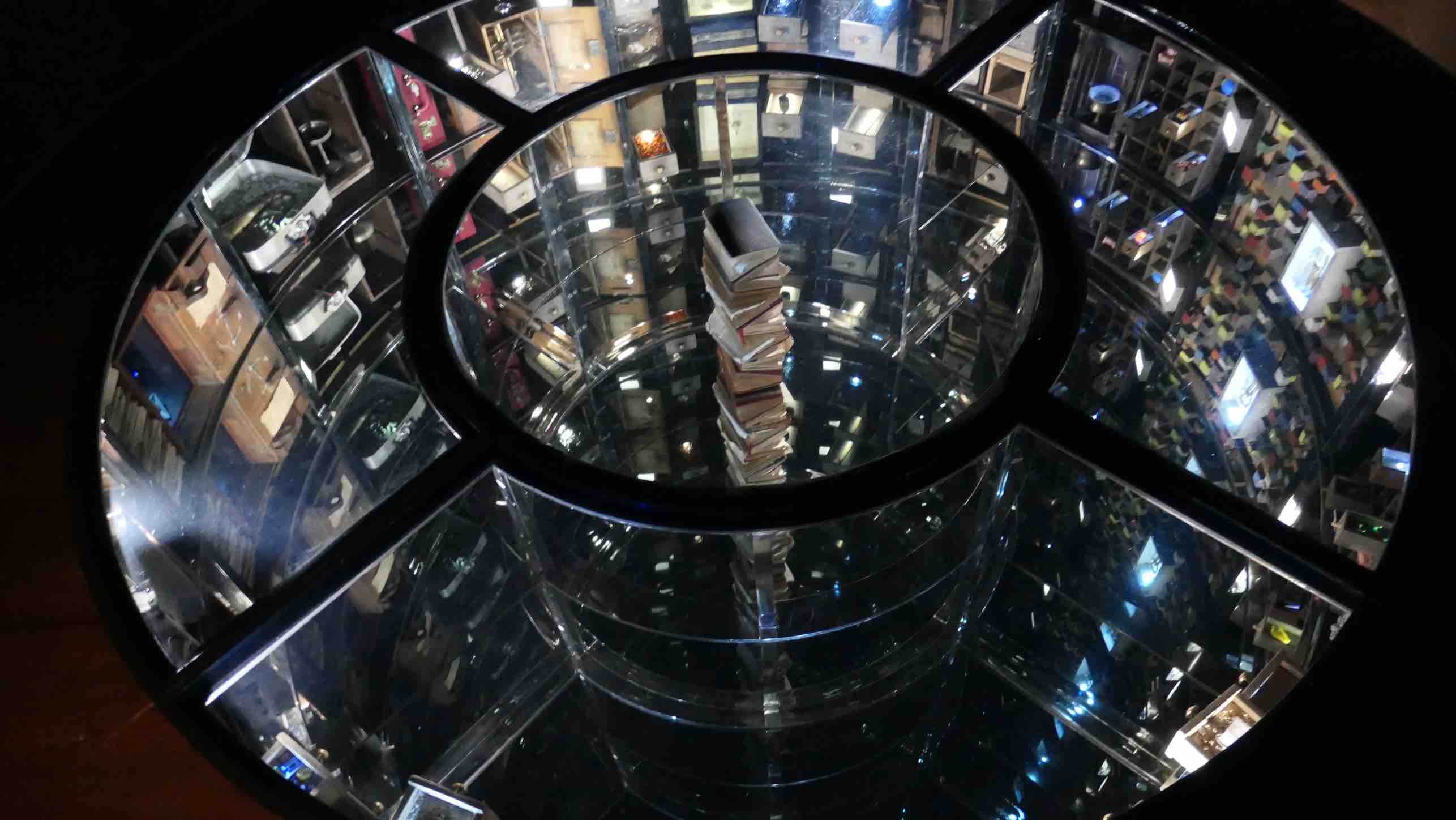
Beyond infinity with Mark Justiniani
From making his name as a social realist painter to embracing sculpture and showcasing his works around the world, Void of Spectacles shows that the artist has lost none of his ability to enthrall or provoke. Whether one considers a void to be little more than infinite nothingness or a metaphysical text of limitless possibilities, Justiniani’s proven ability to intersect art with political context remains entirely intact, while inviting his audience to derive their own interpretations of his fantastical creations.
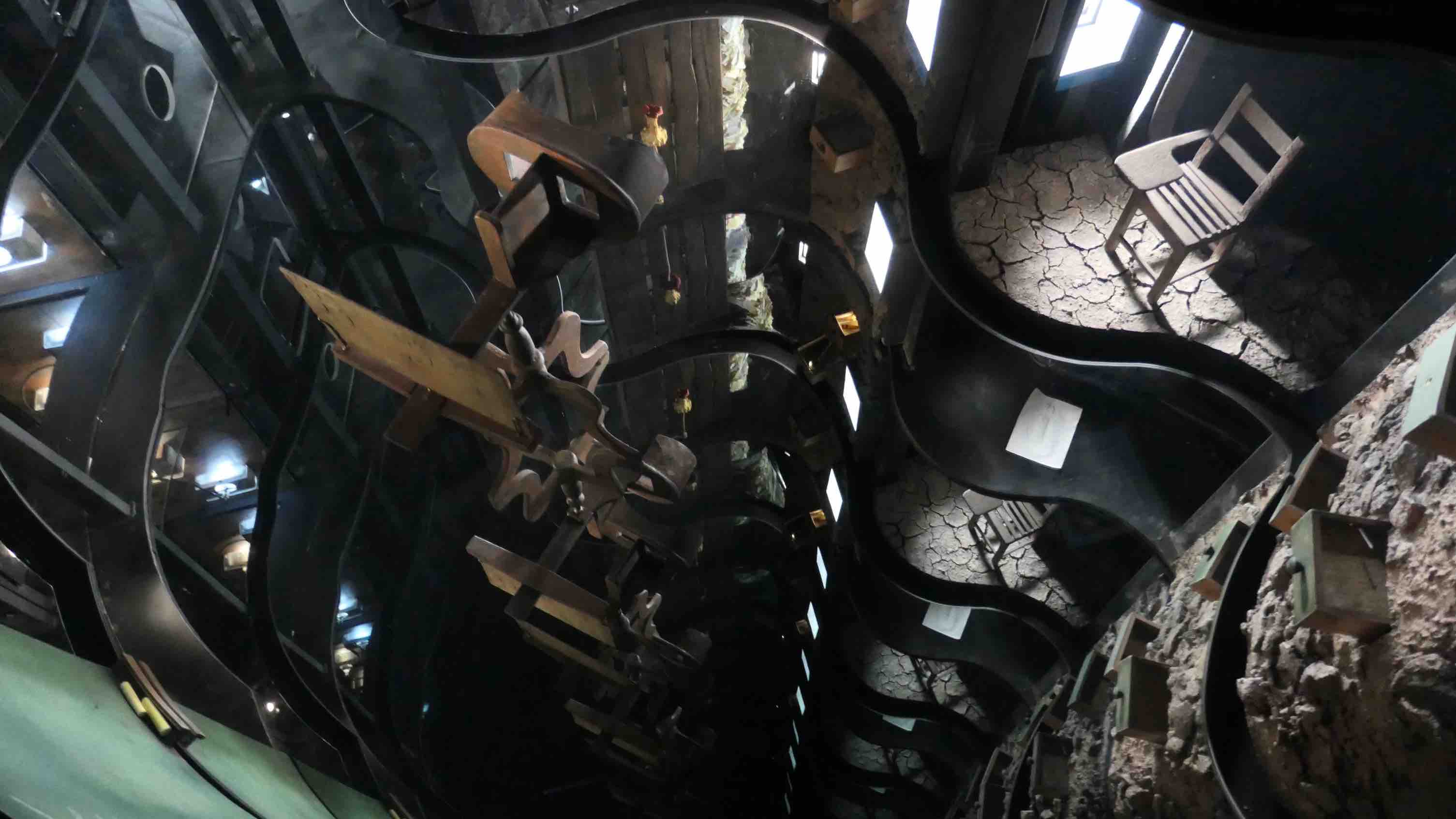
Of course, therein lies the inherent beauty of a void—regardless of what’s out there, whatever you end up seeing is entirely up to you.
Co-presented with Tungtung Alon Art Foundation, Void of Spectacles is on display at the Ateneo Gallery from Feb. 6 to July 6. Admission is P50.


